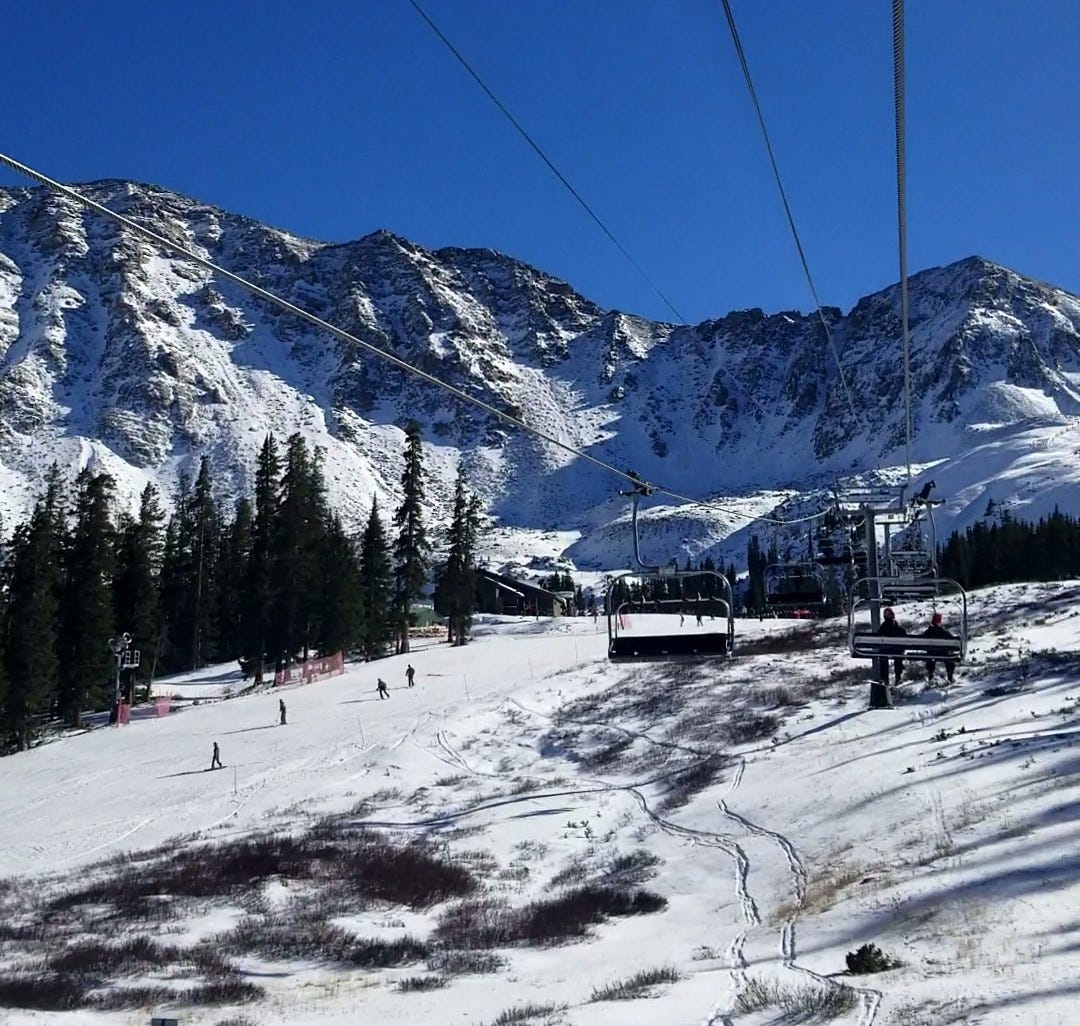How to Start Your Ski Season Right
A successful start means a realistic, cautious approach, knowing your limits, and being realistic about expectations. Here's how to manage yours.
I look down at my watch. 1:57.
The motions start playing out in my head. There are a couple other people in the lift line. If I strap on my snowboard now, I should get to the ticket gate at exactly 2:00, when my pass activates. Then we maximize our runs.
Deciding my calculation is probably about right, I throw my board onto the ground. I get a lot of information from the muted thwap noise it makes. No hard-packed ice crust. Enough of a mushy layer on top to make for decent riding.
I sit in the mashed potato snow and cringe. I’m not wearing my ski pants today — it’s too hot for that. Instead, I’m in a bathing suit and t-shirt. Of course, I still have my ever-important safety gear. But beach attire simply does not offer the same thermal insulation from direct contact.
I ratchet down the binding straps on my lead foot, and skate through the lift line.
It’s 2:00, on the dot when I arrive at the turnstile. I press my temporary ticket against the scanner. It beeps, flashes green. The gate lowers.
I hustle up the gently sloped ramp, and join two other riders at the loading line.
The next chair swoops into the wheel house, rounds the corner, and sweeps ups off our feet. For the first time in months, I’m on my way up the mountain.
For early season riding, the conditions look damn good. There’s thin snow on most of the trails — still not enough to ride, but an omen of more trail access in the near future.
More good news: I can see riders getting in their turns on the trail beneath us. But I don’t hear the tell-tale scrape that warns of icy or wind-packed conditions.
Even if we’re all confined to just one trail — a meandering blue called “high noon,” — I’ll take whatever gets me on the mountain for some October fun.
Conditions looked, and sounded great.
The chair jostles, shaking me from my thoughts. We’re closing in on the top.
A lifty waves, dumps a shovel-full of fresh powder on the unloading ramp, and gestures to the snow pile like he’s rolled out the red carpet for our arrival.
The instant the lift pulls into the wheelhouse, I shove off the chair and zip out of the unloading area.
Less than a minute later, my back foot is strapped in. I’m on my feet, and ready for the season’s first run. I have a great feeling about this.
So great, in fact, that I decided to break out some nice, deep carves — the kind that truly test the power of your leg muscles.
I build some speed, crouch, lean back over my heels, and grab the toe-side of my board.
What follows is a sensation that is impossible to explain to someone who has not felt it for themselves: feeling the board become an extension of your body, the contour of the mountain beneath your feet, your movement dictated by some higher power, cutting a path for you that flows across the face of the mountain like a river of snowmelt.
Organic.
Natural.
At least, that’s how I usually feel.
About half a second into the carve, I hit a patch of crusty snow. My legs shoot out from under me, and my butt skips across the packed-in surface like flat rocks on a still pond.
Ow.
Share this with someone who goes too hard in the early season:
Taking on the Challenges You’re Ready for
Early season poses an interesting risk profile for riders, because of an intersection of less-than-ideal factors:
The majority of deadly accidents happen on intermediate trails
Beginner and expert riders are grouped in the same place
General crowding
Suboptimal weather, snow, or grooming conditions
Weaker physique
Overconfidence from the end of the previous season
That last one gets me. I’m used to being able to do pretty much whatever I want on a snowboard. But alas: the long off season erodes skill and strength while leaving ego and confidence largely intact.
For a man such as myself — self-critical, headstrong, and frustrated by lost progress — this becomes a recipe for disaster.
As I’ve previously discussed, avoiding challenge altogether quickly leads to a creeping feeling of worthlessness and despair.
Challenge is good. Challenge fulfills.
But there’s such a thing as biting off more than you can chew.
“You Attempted a Late-Season Maneuver on Early-Season Legs.”
My snowboarding buddy is liable to say this about any pre-January wipeout. It sticks with me always, because it speaks to our preparedness, even offering a little bit of hope.
It doesn’t mean you can’t do something — just that you can’t do it yet.
Anything can be within your reach if you take the time to develop your strength. Brush up on your knowledge. Achieve a higher comfort with the necessary skills.
Prepare, practice, and persevere — in that order.







Can't help but laugh out loud of that perfect visual of wiping out on the first run of the season. Can't wait for more stories from the mountain!